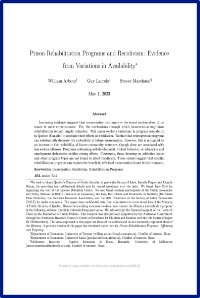By Susan Howley
Introduction In Spring 2022, the Council on Criminal Justice (CCJ) launched the Task Force on Long Sentences, a group of 16 experts representing a broad range of experience and perspectives, including crime victims and survivors, formerly incarcerated people, prosecutors, defense attorneys, law enforcement, courts, and corrections. Its mission is to examine how prison sentences of 10 years or more affect public safety, crime victims and survivors, incarcerated individuals and their families, communities, and correctional staff, and to develop recommendations to strengthen public safety and advance justice. As part of this effort, the Task Force convened nine listening sessions. The sessions were designed to gather input from victims and survivors of crime, including family members of homicide victims, close relatives of people serving long sentences, and individuals who served long prison sentences themselves. The purpose of this analysis is to elevate the perspectives of those individuals closest to long sentences – victims and survivors of serious crime and individuals who served long sentences and their loved ones. The views expressed by participants should be interpreted as direct reflections of their thoughts and feelings rather than as a blueprint for policy reform. Please also note that the opinions presented are not representative of all victims and survivors of serious crime, or all individuals who have served long prison sentences. Two overarching themes emerged from the listening sessions. First, while the sessions were designed to address victims and survivors and formerly incarcerated individuals and their loved ones separately, there was significant overlap in the experiences of participants. Many victims and survivors expressed having experienced the impact of incarceration through a family member and many formerly incarcerated people and their loved ones discussed having experienced serious violence. Although every effort was made to recruit diverse participants, the overlap in experience may be an artifact of how individuals were identified for participation in the listening sessions or may be evidence that there is significant overlap between “victims” and “offenders.” Second, there was broad agreement between victims and survivors and formerly incarcerated people and their loved ones on most of the topics explored in the listening sessions and presented below. This brief highlights where the perspectives of listening session participants were in sync-and where they diverged.
Washington, DC: Council on Criminal Justice, 2023. 20p.





















